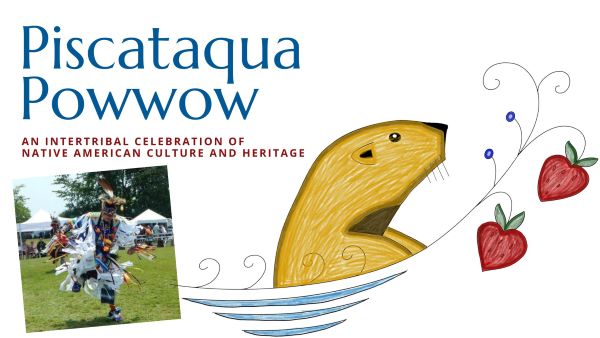The History of New England and New Hampshire Scalp Bounties
As we gear up for the upcoming Piscataqua Powwow here at Strawbery Banke on August 12-13, the members of the Abenaki Heritage Initiative team are working to expand our People of the Dawnland Exhibit.
One aspect of this expansion will come in the form of a new exhibit in the east room of Jones House, where we plan to focus on the history of bounties on Native peoples in New England, as well as their conflicts with English settlers.
The Anglo-Abenaki Wars
Journal of the House. Province of New Hampshire. [Provincial and state papers.] V.5 1738/1749. New Hampshire House meeting in 1747 to raise payment of scalp bounties.
As English settlers attempted to expand their colonies into the Dawnland — the traditional homelands of the Pennacook-Abenaki, Wabanaki, and other Indigenous Peoples — a larger conflict emerged between the English settlers and the Natives in regions of New Hampshire, Maine, and Massachusetts in the 1670s. After the first Anglo-Abenaki war along the New England/Acadia border (present-day Maine), the five Native tribes in Acadia formed the Wabanaki Confederacy to ally with the French against encroaching English settlements and the Iroquois Confederacy. The fighting continued through the 1760s in six Anglo-Abenaki wars total. During the last Anglo-Abenaki war (aka the Seven Years War or French and Indian War) at least 14 bounty proclamations against Native peoples were issued by Massachusetts, New Hampshire, and Nova Scotia governments.
Historic Marker #55 near Baker River in Rumney, New Hampshire.
Bounties
Europeans have had a long history of severing scalps, hands, and other body parts from their enemies to display state power. New England colonists later expanded upon the Dutch bounty system to include rewards for the body parts of their enemies. For example, in the 1630s, New England settlers issued bounties for killing predatory animals, such as wolves, who threatened their ability to control the environment and colonize the area. Provincial governments often offered monetary rewards or land for the severed heads of unwanted animals (Ball, 2013).
The English settlers saw Native Peoples, who had been living on Northeastern lands long before the settlers, as a threat to their colonizing efforts — just like they saw wolves. Thus, New England provincial legislatures began instituting bounties against Native Peoples during the 17th century. These bounties often called for the murder of Native Peoples and the removal of their scalps. The bounties even used language similar to those for animals (Upstander Project, 2022).
Massachusetts government officials offered what would be about $12,000 today for the scalp of a Native man. They offered half as much for the scalp of a Native woman, and a little less for that of a child. Government officials sometimes issued proclamations against specific tribes that they saw as dangerous or antagonistic, but hunters and authorities were not able to identify Native people's tribal affiliations, so bounties essentially called for the murder and genocide of all Native Peoples (Upstander Project, 2022).
Journal of the House. Province of New Hampshire. [Provincial and state papers.] V.5 1738/1749. New Hampshire House meeting in 1747 to raise payment of scalp bounties.
The Upstander Project has found government payments for 375 human scalps in New England that resulted in government payments of what would be millions of dollars in today’s money (Upstander Project, 2022). New Hampshire was under Massachusetts jurisdiction regarding bounties while it was still considered part of the Massachusetts Bay Colony until 1691. When New Hampshire became its own province, several New Hampshire bounty acts in 1711-1723 encouraged the murder of Native enemies of the state, and there is documented evidence of the New Hampshire province offering scalp bounties starting in 1745.
This call for violence, as well as the association of Native Peoples with dangerous animals, furthered anti-Native sentiment and the divide between Native Peoples and English settlers. Though we’re calling attention to the bounties placed in these New England regions, bounties were issued all over Turtle Island. The Upstander Project has found 79 government-issued scalp edicts across the Dawnland from 1675 to 1760, and 50 scalp edicts issued elsewhere in the United States up until 1885 (Upstander Project, 2022).
Native Resistance and Survival
Still, Natives resisted and survived. Though colonial forces weaponized negotiations with Native peoples, the Wabanaki Confederacy signed around a dozen treaties with New England's colonial governments in their fight to keep their lands, autonomy, and cultures (Prins, 2002, 375-376). One such treaty was the Drummer's Treaty, in which the Penobscot and other Wabanaki refused to give up their tribal lands and become subjects of any colonial government (Prins, 376). The Drummer's Treaty of 1725 helped pause the violence from the Drummer's War (1722–25) between the Wabanaki and British colonists over the Acadia/New England border.
Currently, many Abenaki are still fighting for their rights, lands, and cultural items through the court system and other means. Today, there are over 10,734 Native Americans and Alaska Natives living in New Hampshire (U.S. Census Bureau 2020) and about 476 million Indigenous peoples in the world (United Nations).
Sources:
Prins, Harald E.L. 2002. "The Crooked Path of Drummer's Treaty: Anglo-Wabanaki Diplomacy and the Quest for Aboriginal Rights." 360-377.
United Nations. Indigenous Peoples. https://www.un.org/en/fight-racism/vulnerable-groups/indigenous-peoples.
Upstander Project. Bounty Teacher's Guide. 2022.
U.S. Census Bureau. 2020. American Community Survey, 2020 American Community Survey 5-Year Estimates, Table B02010; generated by Alexandra Martin; using data.census.gov; <https://data.census.gov/cedsci/> (May 24, 2023).
Wallace, Sarah Isabel. 2018. The Canadian Encyclopedia. Peace and Friendship Treaties. https://www.thecanadianencyclopedia.ca/en/article/peace-and-friendship-treaties.



Comments
Post a Comment